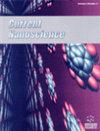碳纳米管:针对癌细胞的靶向药物递送
IF 1.5
4区 材料科学
Q4 BIOTECHNOLOGY & APPLIED MICROBIOLOGY
引用次数: 0
摘要
自古代医疗部门以来,人类受试者的药物递送一直是最困难的任务。理想的给药系统是使候选药物的副作用最小化并使预期效果最大化的系统。各种给药系统已经被开发出来,它们可能有一些优点和缺点,其中靶向给药系统是更可取和方便的,它可以使用各种纳米颗粒或其他材料在指定的作用部位给药。在这篇文章中,作者详细而全面地解释了碳纳米管(CNTs)在靶向药物递送系统(特别是针对癌细胞)中的作用。作者还介绍了碳纳米管的制备方法、碳纳米管的表征技术、碳纳米管的细胞渗透以及碳纳米管的相关毒性。碳纳米管比其他纳米颗粒更可取,因为它们在电、机械和有机方面比其他纳米颗粒更稳定,与其他纳米颗粒相比,它们可以携带更多的药物,而且它们的功能化特性使它们作为靶向任何疾病根源的载体分子更具吸引力。本文章由计算机程序翻译,如有差异,请以英文原文为准。
Carbon Nanotubes: A Targeted Drug Delivery against Cancer Cell
: Drug delivery in human subjects has been the most difficult task since the ancient time of the medical sector. An ideal drug delivery system is, one that minimizes the adverse effects and maximizes the desired effects of the drug candidate. Various drug delivery systems have been developed that may have some kind of advantages and disadvantages, among them targeted drug delivery system is more preferable and convenient which may employ various nanoparticles or other materials for the drug delivery at the specified site of action. In this, the authors elaborately and comprehensively explained the role of recent carbon nanotubes (CNTs) in targeted drug delivery systems (specifically for targeting cancerous cells). The authors also described the methods of preparation of CNTs, characterization techniques for CNTs, cellular penetration of, CNTs, and the associated toxicities with CNTs. Carbon nanotubes are preferable to other nanoparticles because they are more electrically, mechanically, and organically stable than others, they can carry more amount of drug in comparison to other nanoparticles and their functionalization property makes them more attractive as a carrier molecule for targeting any root cause of the disease.
求助全文
通过发布文献求助,成功后即可免费获取论文全文。
去求助
来源期刊

Current Nanoscience
工程技术-材料科学:综合
CiteScore
3.50
自引率
6.70%
发文量
83
审稿时长
4.4 months
期刊介绍:
Current Nanoscience publishes (a) Authoritative/Mini Reviews, and (b) Original Research and Highlights written by experts covering the most recent advances in nanoscience and nanotechnology. All aspects of the field are represented including nano-structures, nano-bubbles, nano-droplets and nanofluids. Applications of nanoscience in physics, material science, chemistry, synthesis, environmental science, electronics, biomedical nanotechnology, biomedical engineering, biotechnology, medicine and pharmaceuticals are also covered. The journal is essential to all researches involved in nanoscience and its applied and fundamental areas of science, chemistry, physics, material science, engineering and medicine.
Current Nanoscience also welcomes submissions on the following topics of Nanoscience and Nanotechnology:
Nanoelectronics and photonics
Advanced Nanomaterials
Nanofabrication and measurement
Nanobiotechnology and nanomedicine
Nanotechnology for energy
Sensors and actuator
Computational nanoscience and technology.
 求助内容:
求助内容: 应助结果提醒方式:
应助结果提醒方式:


